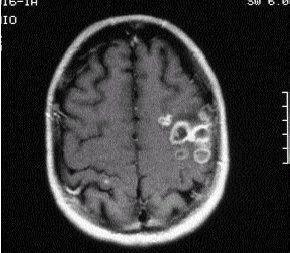

Recently, cine phase-contrast magnetic resonance imaging (cine-PC MRI) has emerged as a useful technique for the measurement of multiple physiological parameters without the need for invasive maneuvers (7,8). Lymphatics located proximal to arteries and nerves are also part of the CSF absorption mechanism (6).Įvaluation of CSF flow dynamics, in adults and children, is an essential clinical tool for the assessment of various neurological diseases.

Additional sites of absorption include the spinal arachnoid villi near the epidural spinal veins and the meningeal sheaths of the spinal and cranial nerves. After circulating through the ventricular system, subarachnoid spaces, and ependymal canal, CSF is absorbed into the venous system by the arachnoid granulations (4,5). It is mainly produced by the epithelium of the choroid plexuses, located in the lumen of the lateral ventricles and in the fourth ventricle. The CSF also plays an important role in the homeostasis of the interstitial fluid of the brain parenchyma, as well as in regulation of neuronal function (3). Além disso, não foi encontrada correlação significativa entre a área corporal, a velocidade média e o volume sistólico.ĬONCLUSÃO: De modo geral, os parâmetros básicos do fluxo do líquido cerebrospinal independem de idade e sexo em crianças.Ĭerebrospinal fluid (CSF) is a transparent liquid, with a density of 1,003–1,008g/cm 3 and a protein content lower than that of plasma its main function is to provide protection to the brain and spinal cord through buoyancy (1,2). Esses valores não foram afetados pela idade ou sexo das crianças. RESULTADOS: Os seguintes valores normais foram obtidos: fluxo efetivo de 1,10 ± 0,99 mL/m volume médio de 12,2 ± 10,1 μL/ciclo velocidade média de 0,72 ± 1,00 cm/s pico de velocidade sistólica de 5,28 ± 2,30 cm/s pico de velocidade diastólica de 4,51 ± 1,77 cm/s. Uma curva de fluxo-tempo e medições automáticas de diversos parâmetros foram obtidas.
#Contraste resonancia magnetica cerebral software
A análise foi realizada por meio de software especializado, desenhando uma região de interesse no aqueduto. MATERIAIS E MÉTODOS: Convocamos 32 crianças saudáveis em uma análise descritiva de prevalência para a avaliação quantitativa do fluxo do líquido cerebrospinal pelo aqueduto de Sylvius. OBJETIVO: Avaliar a dinâmica do fluxo do líquido cerebrospinal por cine-ressonância magnética com contraste de fase em crianças saudáveis, para determinar os valores normais de fluxo nesta população, bem como a diferença entre medições distintas de acordo com idade, sexo ou área da superfície corporal. In addition, body surface area was not found to correlate significantly with mean velocity or stroke volume.ĬONCLUSION: In children and adolescents, the basic cerebrospinal fluid flow parameters, as determined by cine-PC MRI, appear to be independent of age and sex. These values were not affected by age or sex. RESULTS: The following normal (mean) values were obtained: net flow, 1.10 ± 0.99 mL/m stroke volume, 12.2 ± 10.1 μL/cycle mean velocity, 0.72 ± 1.00 cm/s peak systolic velocity, 5.28 ± 2.30 cm/s peak diastolic velocity, 4.51 ± 1.77 cm/s. A flow-time curve was obtained, as were automated measurements of the various parameters. We used specialized software to analyze the images obtained with cine-PC MRI, drawing a region of interest on the aqueduct. MATERIALS AND METHODS: This was a descriptive cross-sectional study involving 32 healthy children and adolescents, in whom the flow of cerebrospinal fluid through the cerebral aqueduct was evaluated quantitatively with cine-PC MRI. OBJECTIVE: To evaluate cerebrospinal fluid dynamics, using cine phase-contrast magnetic resonance imaging (cine-PC MRI), in healthy pediatric subjects, determining the normal flow values in this population, as well as identifying differences related to age, sex, and body surface area. Keywords: Cerebrospinal fluid Magnetic resonance imaging, cine Cerebral aqueduct Hydrodynamics.ĭescritores: Líquido cerebrospinal Imagem cinética por ressonância magnética Aqueduto do mesencéfalo Hidrodinâmica. Cine phase-contrast magnetic resonance imaging evaluation of cerebrospinal fluid flow dynamics in healthy pediatric subjectsĪutho(rs): Karen Sousa Plata 1,a Gerardo Cruz 1,b Hector Lezcano 2,c


 0 kommentar(er)
0 kommentar(er)
